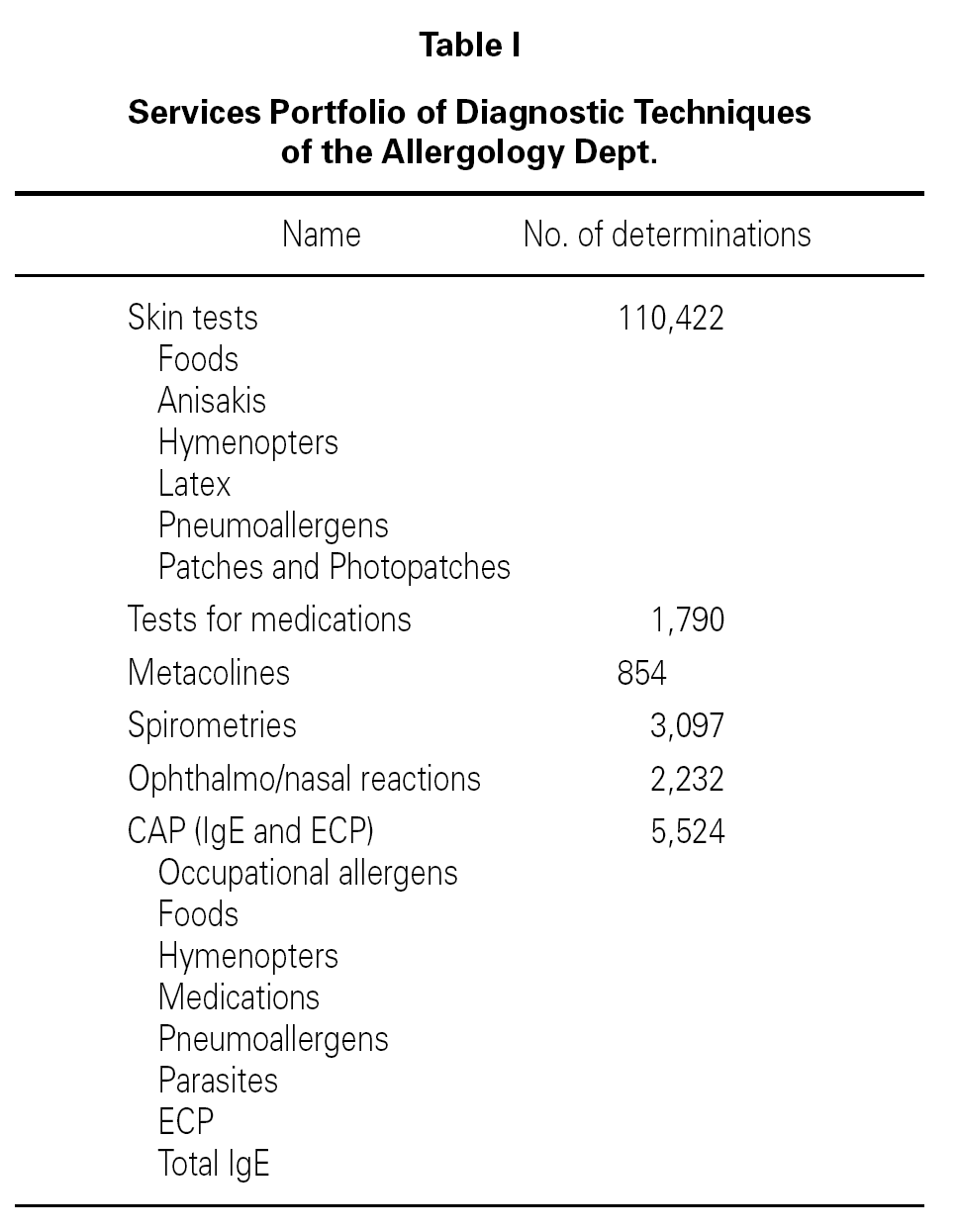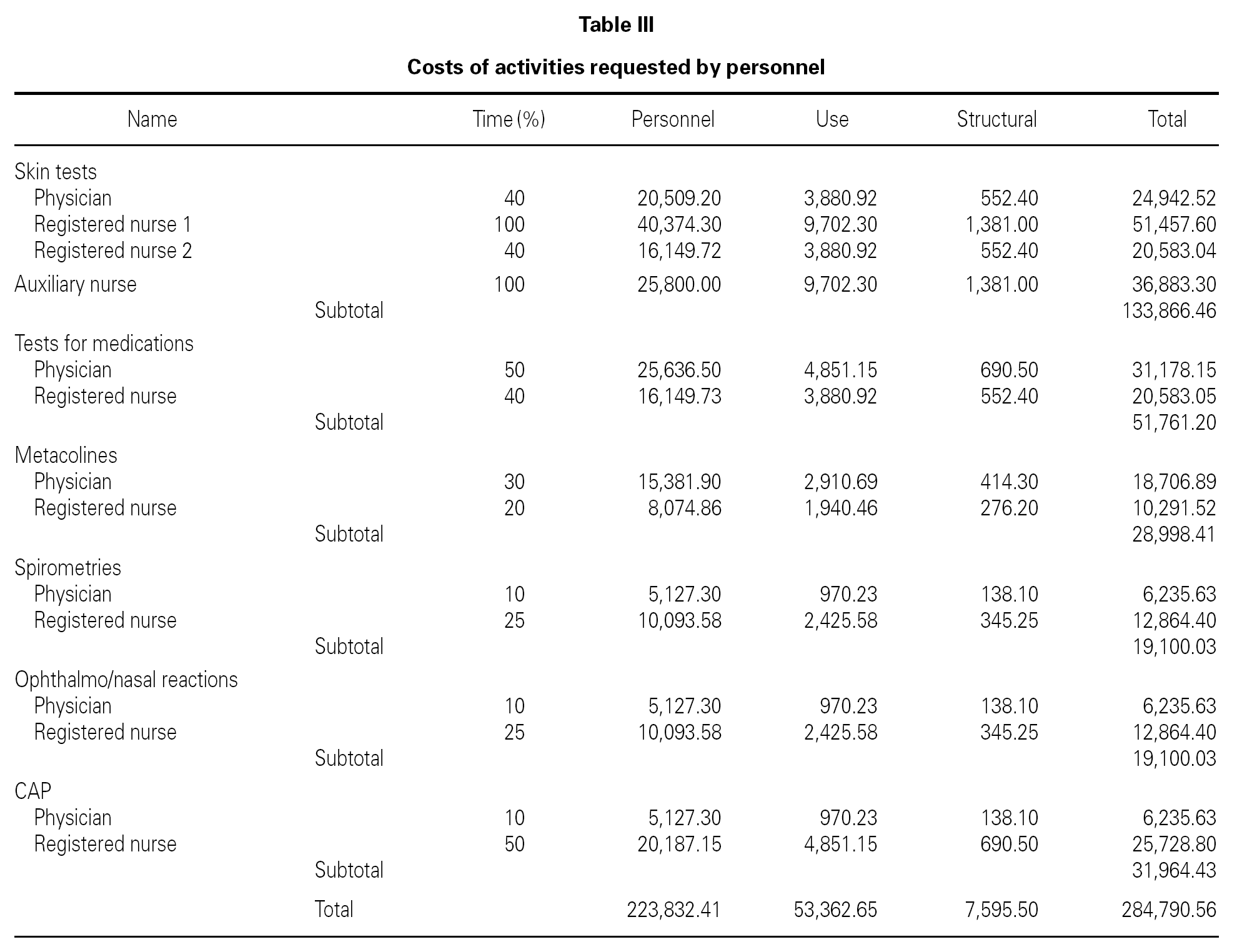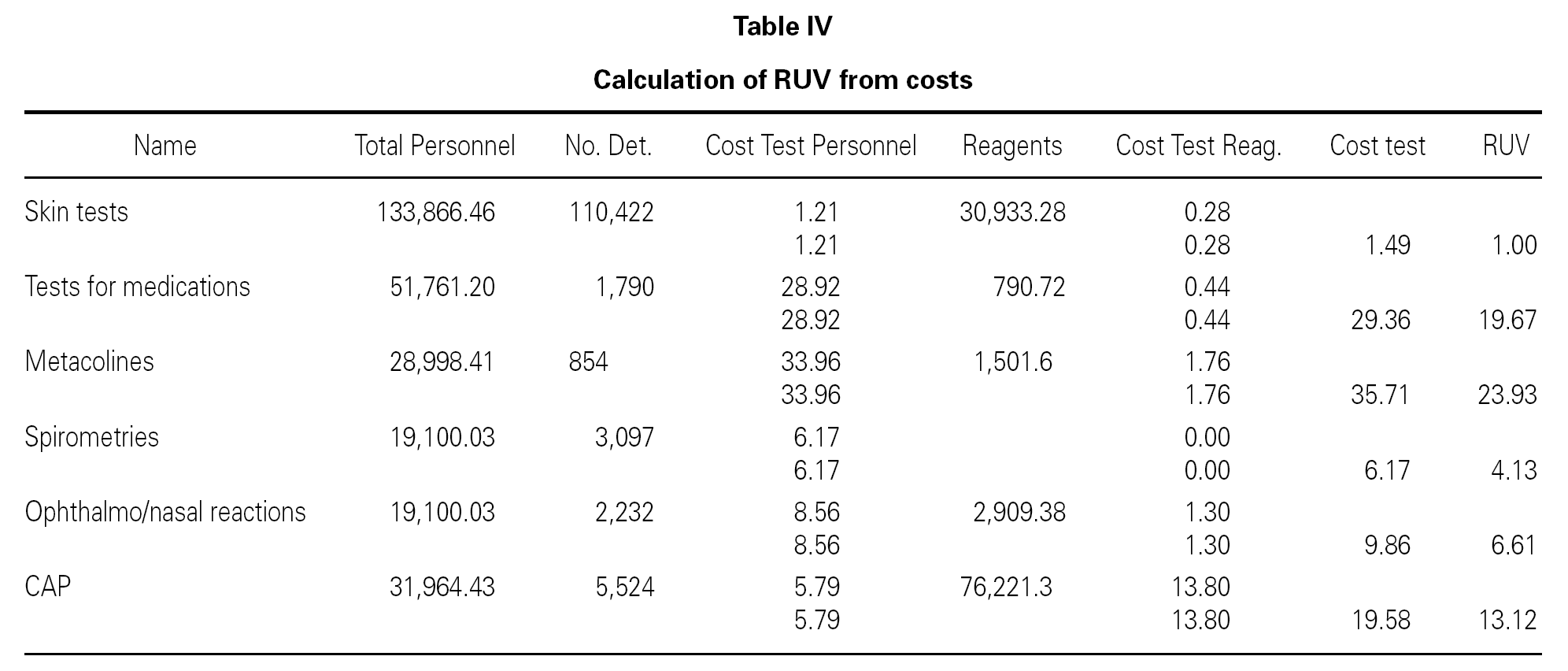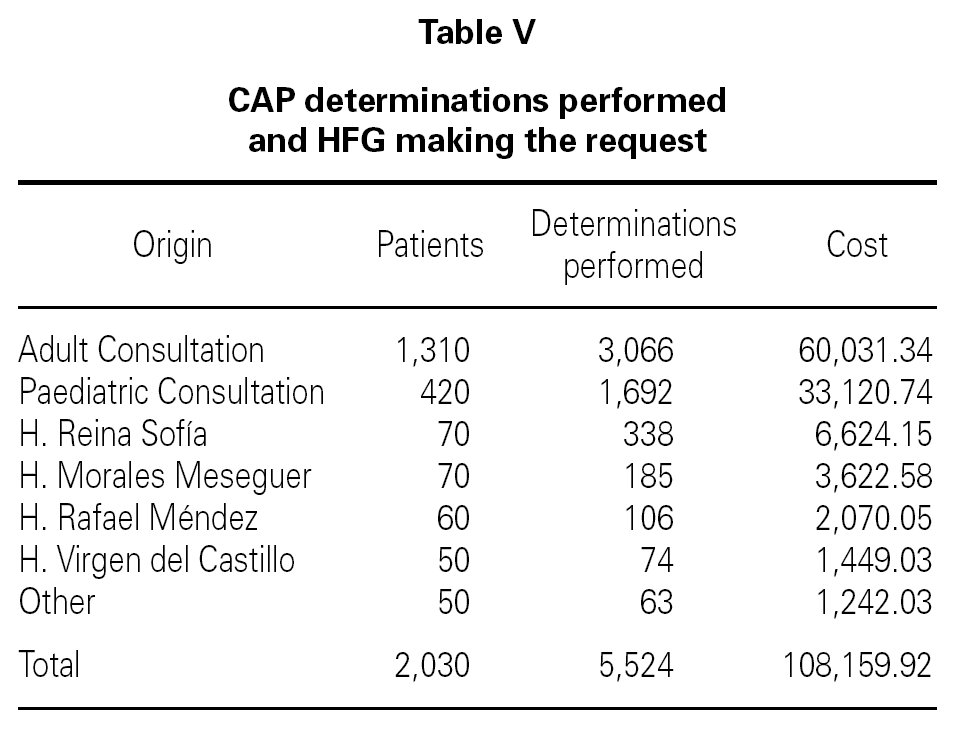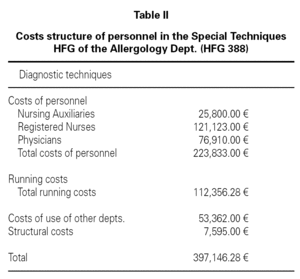INTRODUCTION
For some years now our group has been estimating costs in Allergology, as we consider that this task gives added value to our other activities.
The assignation of weighted values to the diagnostic techniques used in Allergology is seen as a necessity by numerous professionals, specialists and Allergology centres to facilitate analytical accountancy and the charging of costs to their departments.
We had twin objectives in mind: the updating of the Services Portfolio or catalogue of diagnostic therapeutic examinations used in Allergology, and the establishment of relative units of value (RUV) for those procedures in our Department. We hope that once the proposal has been discussed in the forums of the speciality and accepted by the members of the Spanish Society of Allergology and Clinical Immunology, it will provide an agreed, standardised and ordered list of the procedures carried out in an Allergology Department and could be used as standard terminology.
The availability of RUV for all examinations will permit each Allergology Department to calculate its parameters of activity and performance.
STUDY OBJETIVES
The objective was to assign weighted values to each diagnostic technique used in the speciality of Allergology, taking the costs for personnel and the costs of materials per examination. The calculation will use as reference the prick-test, which is considered as one unit.
MATERIAL AND METHODS
The examinations have been put in consecutive order following our Department's Portfolio of Diagnostic Technical Services (table I), and are classified according to diagnostic groups. A six figure Code is assigned to each examination, for introduction after the definitive approval of the document.
Information sources
The administrative management of patients in the Outpatients Consultations Department, as well as that of tasks relating to the appointments process and the recording of the actions taken with patients in this Hospital Department, is performed on HP-HIS1® by the Outpatient Consultations module, which provides a flexible system for designing appointment books. This module is designed so that the administrative staff in the Appointments Centre of the Admissions Department for Outpatient Consultations makes the appointments for first time patients, and the staff in the Allergology Unit makes further appointments and any patient requested appointment. The appointments section is an interface presenting the user with all the information required to perform the tasks, such as the scheduling of appointments, registration of new patients, changes in scheduling (cancellations, re-scheduling) or recording of the action performed, in accord with the Unit's profile.
The frequency of controls and the health professional present at each particular visit were defined by the current Allergology Unit schedule.
The data was completed with the costs structure provided by the Evaluations Unit at the hospital.
Procedure for electronic creation of the results sheet
The structure chosen for the introduction and presentation of data was a spreadsheet from Microsoft Excel (Office Professional for XP) 1, configured as a series of pages describing each activity for the departmental evaluations.
Definitions
Physician time
The time used by the allergologist in preparing the report, plus supervision or the examination itself, in the cases where this is applicable.
Nursing staff time
This measures the time taken by the Registered Nurse or Nursing Auxiliary and used in performing the technique.
These times are weighted according to the costs of health personnel, and they therefore reflect the consumption of human resources required for each study.
Relative units of value (RUV)
The relative unit of value expresses the financial cost of each examination performed in Allergology. That is to say, it indicates how much more expensive one procedure is than another reference procedure. The relative units of value are therefore conversion factors which allow us to transform the resources consumed in performing a procedure into its cost in financial terms.
Costs structure
The following costs were considered:
1. Departmental Costs:
Cost of personnel.
Running costs.
2.Costs of the use of other departments, such as: Admissions, Management of Personnel, Invoicing and collection of monies, etc.
3.Structural costs.
Procedure for collecting and transcribing data
The planned process began with the request by the physician designated by the group of the required information from the Evaluation Unit in the department handling the global information sources mentioned. These data were then transcribed to the corresponding cells in the Excel programme, whose previously defined calculations automatically provide the results for the Department. A Clinical Session was later held with the staff in the Allergology Department, when they were informed of the results and provided with an explanation of the glossary of terms.
RESULTS
The results for the activity carried out in 2005 by the HFG "Diagnostic Techniques" in the Allergology Department (HFG 388) are presented in table I, and the costs of the HFG in table II.
If we use the distribution of the time of the professionals involved as a conversion coefficient to distribute personnel costs, the use of other departments and structural costs, we obtain the costs of each of the techniques under these three headings (table III).
Taking the number of determinations performed in 2005, we can calculate the costs of personnel for each determination. If we add the running costs (reagents, etc.) to these, we can calculate the cost of each determination performed (table IV). Please note that this calculation of costs does not take into consideration the capital recouped from investment in apparatus.
If we take the cost of one skin test as the relative unit of value, we can extrapolate the RUV in our Department to other determinations performed (table IV).
DISCUSSION
This article represents the extension and development of previous attempts which had the same objective 2, 3. It will enable the Allergology Department to evaluate its own indicators after the application of management decisions, as proposed by Rodríguez Padial and co-workers 4.
Recently, using activity indicators and the costs structure from the first semester of 2005, we estimated the costs of a first and a second visit for the patients attended during that period in our Department 5. Although we used previously proposed RUV for the calculation of the costs of supplementary examinations, we were aware that it was necessary to update them for the various diagnostic techniques used in Allergology.
The above study went on to reach an agreement with the health professionals working in Allergology on the restructuring of the functional units, classifying human resources (H.R.) into Homogeneous Functional Groups (HFGs) and distributing them by areas of actions taken in the Department. An organisational chart of the different study areas was designed, where the time of each health professional was distributed in accord with the activity performed. This new Departmental organisational chart has enabled us to estimate the costs of the products for HFG for diagnostic techniques in Allergology, and so to assign RUV to the various supplementary examinations performed.
Knowing the real cost of the determinations we perform and the origin of the request for them will permit us in the not too distant future to be able to present invoices between Health Departments (table V), as the Local Autonomous Region of Valencia is at present trying to do.
As we did not find any antecedents on this issue in the bibliographical search performed in the main databases (Medline, Embase, etc.), we hope that after discussion of the proposal in the forums of the speciality and on acceptance by the members of the Spanish Society of Allergology and Clinical Immunology, it will provide an agreed, standardised and ordered list of the procedures carried out in an Allergology Department and could be used as standard terminology.
CONCLUSIONS
To conclude, it should be underlined that the present analytical management system: 1) Provides information which should be valid for the clinician. 2) It is necessary to identify the real generators of expenditure in the microcosm of daily therapeutics and so permit the re-assignation of resources. 3) The system facilitates corrections leading to decisions enabling optimal execution of the budget. 4) Clinical management and analysis should work together with the aim of taking the measures required to optimise resources.
Correspondence:
J.M. Negro Álvarez
Valle, n.º 7
30120 El Palmar. Murcia.
Tel.: 968-369615
Fax: 968-369791
E-mail: jnegroa@meditex.es




